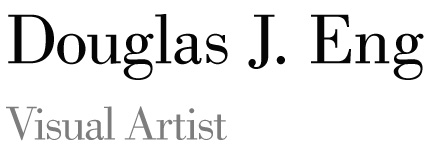


For the past three years we have been providing photography for our regional science fair. This involves individual project photos taken during the day of judging (about 280), and taking the award presentation photos during the ceremony the following evening. This is a big fund raiser for the fair, and usually nets around $1400. Usually the fair lasts 3 days, with setup on Sunday afternoon, judging on Monday, and awards ceremony on Tuesday night. During the judging, Dorian and I visit each student to take their project photo. This year I used my small 12x18 softbox on a lightstand. Overall I liked the softer light rather than on-camera flash with the Gary Fong diffuser. Problem is the aisles were very tight and things were crowded. I also had some problem with the white balance and I should have gelled the flash and set to fluorescent. The mixed lighting made the backgrounds look a pukey mustard color. The most complex task is coordinating the image with the student. We printed individual address labels with project numbers, student names, and project names, and as we took a photo, we recorded a sequence number on each label. You cannot take all the students sequentially as some of them are being judged and you have to come back. After we insured ourselves that we got everyone, I did the post processing, color adjustments, and cropping to 5x7. Then I added the text for the event name. These files I uploaded to Costco for processing. Expect to spend a few hours doing this.
When you get your prints back then you have to affix the right label to the back of the photo. If you can get the sequence right, it is a matter of finding the next label in your sequence and placing it on the next photo in the stack. When all is complete your are ready to sell. We set up right in front of the entrance to the awards ceremony. We price the 5x7 print at $10, which nets about $9 to the fair. Most parents are good about their donations, and we manage to get most of the people that come to the ceremony to buy their child's photo. While the sales are going on I am taking photos of all the awards being presented. There are Special awards presented by individual groups and then Place awards (1st, 2nd, 3rd, etc.). And then group shots of the State and International teams. There are usually around 200 individual shots. I process these and upload to Printroom.com so that parents can purchase these online. We make about $5 from each print or download through Printroom.
 My children were very active in the Science Fair, and so was I. I don't think most people realize what a big asset the Science Fair is to our future engineers and scientists. It is the only way they have to be recognized and the only venue they can come together to interact with each other and other adults in the scientific community. While a majority of America spends countless hours at the ballfields, this small group of incredibly bright kids are building their interests and skills in academic pursuit. I think that is an honorable direction, something that we all should encourage and support, especially in light of our current economic situation and our inability to produce anything of value to the world. Engineering, manufacturing, science, medicine? No, we are obsessed with professional sports, Hollywood, and American Idol. Most American cities have a regional science fair. Intel is the biggest sponsor of the International Science and Engineering Fair, the "Olympics" of science fair competition. Most people have never heard of it. If you are interested, try to find your local fair and volunteer some time. You will be inspired by the children and feel hopeful that someone is taking care of our future.
My children were very active in the Science Fair, and so was I. I don't think most people realize what a big asset the Science Fair is to our future engineers and scientists. It is the only way they have to be recognized and the only venue they can come together to interact with each other and other adults in the scientific community. While a majority of America spends countless hours at the ballfields, this small group of incredibly bright kids are building their interests and skills in academic pursuit. I think that is an honorable direction, something that we all should encourage and support, especially in light of our current economic situation and our inability to produce anything of value to the world. Engineering, manufacturing, science, medicine? No, we are obsessed with professional sports, Hollywood, and American Idol. Most American cities have a regional science fair. Intel is the biggest sponsor of the International Science and Engineering Fair, the "Olympics" of science fair competition. Most people have never heard of it. If you are interested, try to find your local fair and volunteer some time. You will be inspired by the children and feel hopeful that someone is taking care of our future.
































 As I started driving north the sun was going in and out and to my surprise a huge rainbow appeared on the ocean. I was approaching Sand City (appropriately named) and wanted to find an exit that would take me to the shore. I got off but found myself in the wrong lane to loop to the shore, and ended up back on 1 going north. I was driving like mad to get to the next exit and then backtrack. All this was happening while I had the rainbow in clear sight. Finally when I found the backroad to get to the ocean the rainbow had all but disappeared. So much for that. Moss Landing was ahead and I could not wait to see what Michael Kenna found there.
As I started driving north the sun was going in and out and to my surprise a huge rainbow appeared on the ocean. I was approaching Sand City (appropriately named) and wanted to find an exit that would take me to the shore. I got off but found myself in the wrong lane to loop to the shore, and ended up back on 1 going north. I was driving like mad to get to the next exit and then backtrack. All this was happening while I had the rainbow in clear sight. Finally when I found the backroad to get to the ocean the rainbow had all but disappeared. So much for that. Moss Landing was ahead and I could not wait to see what Michael Kenna found there.







 Before you knew it Lady Liberty was right in front of us. We docked and I headed to the park visitor center to get my National Park Passport stamped. You approach the statue from the back, walking around the base you can get a sense of the scale, and then the impact hits you when you walk around to see the face. Brilliant. As I was shooting the light was changing and the conditions were just perfect for what I consider a great day to be out in the cold. These clouds are not Photoshopped! At 5:00 the last ferry was leaving so I made sure I wasn't the last one. On the ferry the sun came out for a brief moment to illuminate the city with the light of liberty.
Before you knew it Lady Liberty was right in front of us. We docked and I headed to the park visitor center to get my National Park Passport stamped. You approach the statue from the back, walking around the base you can get a sense of the scale, and then the impact hits you when you walk around to see the face. Brilliant. As I was shooting the light was changing and the conditions were just perfect for what I consider a great day to be out in the cold. These clouds are not Photoshopped! At 5:00 the last ferry was leaving so I made sure I wasn't the last one. On the ferry the sun came out for a brief moment to illuminate the city with the light of liberty.










 Today I upgraded my
Today I upgraded my  I've always wanted to control my camera from my computer and decided it was time to see if I could get this to work. I knew that Canon had some utility to do this, but didn't have an idea where to start. Looking at my Start menu under Canon Utilities I saw an item called EOS Capture 1.5...hmm, looks promising. Upon expanding that item it had two choices, Readme or Uninstall. That stinks. So I went to the
I've always wanted to control my camera from my computer and decided it was time to see if I could get this to work. I knew that Canon had some utility to do this, but didn't have an idea where to start. Looking at my Start menu under Canon Utilities I saw an item called EOS Capture 1.5...hmm, looks promising. Upon expanding that item it had two choices, Readme or Uninstall. That stinks. So I went to the 
 PC and 5D, together at last!
PC and 5D, together at last!